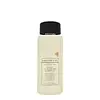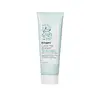What's inside
What's inside
 Key Ingredients
Key Ingredients

 Benefits
Benefits

 Concerns
Concerns

 Ingredients Side-by-side
Ingredients Side-by-side

Water
Skin ConditioningLauramidopropyl Betaine
CleansingCocamidopropyl Hydroxysultaine
CleansingSodium Cocoyl Isethionate
CleansingGlycerin
HumectantSodium Lauryl Sulfoacetate
CleansingDisodium Laureth Sulfosuccinate
CleansingAloe Barbadensis Leaf Juice
Skin ConditioningTocopheryl Acetate
AntioxidantCocos Nucifera Oil
MaskingPhenoxyethanol
PreservativeSodium Lauroyl Sarcosinate
CleansingSodium C14-16 Olefin Sulfonate
CleansingSoyamidopropylamine Oxide
CleansingPolyquaternium-71
HumectantMaltodextrin
AbsorbentSodium Cocoyl Glutamate
CleansingPanthenol
Skin ConditioningPolyquaternium-7
Sodium Hydroxide
BufferingCitric Acid
BufferingWater, Lauramidopropyl Betaine, Cocamidopropyl Hydroxysultaine, Sodium Cocoyl Isethionate, Glycerin, Sodium Lauryl Sulfoacetate, Disodium Laureth Sulfosuccinate, Aloe Barbadensis Leaf Juice, Tocopheryl Acetate, Cocos Nucifera Oil, Phenoxyethanol, Sodium Lauroyl Sarcosinate, Sodium C14-16 Olefin Sulfonate, Soyamidopropylamine Oxide, Polyquaternium-71, Maltodextrin, Sodium Cocoyl Glutamate, Panthenol, Polyquaternium-7, Sodium Hydroxide, Citric Acid
Water
Skin ConditioningSodium Lauroyl Methyl Isethionate
CleansingLauramidopropyl Betaine
CleansingGlycerin
HumectantCocamidopropyl Hydroxysultaine
CleansingSodium C14-16 Olefin Sulfonate
CleansingTrametes Versicolor Extract
Bambusa Arundinacea Leaf Extract
Skin ConditioningHydrolyzed Corn Protein
Skin ConditioningHydrolyzed Wheat Protein
Skin ConditioningHydrolyzed Soy Protein
HumectantLavandula Angustifolia Flower/Leaf/Stem Extract
MaskingHelianthus Annuus Seed Oil
EmollientLinum Usitatissimum Seed Oil
PerfumingPrunus Armeniaca Kernel Oil
MaskingEthylhexylglycerin
Skin ConditioningSodium Gluconate
Skin ConditioningPunica Granatum Fruit Juice
MaskingGlycol Distearate
EmollientLeuconostoc/Radish Root Ferment Filtrate
AntimicrobialAloe Barbadensis Leaf Juice
Skin ConditioningSodium Lauryl Sulfoacetate
CleansingTocopheryl Acetate
AntioxidantPisum Sativum Extract
Skin ConditioningRosmarinus Officinalis Leaf Extract
AntimicrobialCynara Scolymus Leaf Extract
Skin ConditioningPotassium Sorbate
PreservativeSodium Benzoate
MaskingSodium Hydroxide
BufferingParfum
MaskingCaprylhydroxamic Acid
Benzyl Alcohol
PerfumingWater, Sodium Lauroyl Methyl Isethionate, Lauramidopropyl Betaine, Glycerin, Cocamidopropyl Hydroxysultaine, Sodium C14-16 Olefin Sulfonate, Trametes Versicolor Extract, Bambusa Arundinacea Leaf Extract, Hydrolyzed Corn Protein, Hydrolyzed Wheat Protein, Hydrolyzed Soy Protein, Lavandula Angustifolia Flower/Leaf/Stem Extract, Helianthus Annuus Seed Oil, Linum Usitatissimum Seed Oil, Prunus Armeniaca Kernel Oil, Ethylhexylglycerin, Sodium Gluconate, Punica Granatum Fruit Juice, Glycol Distearate, Leuconostoc/Radish Root Ferment Filtrate, Aloe Barbadensis Leaf Juice, Sodium Lauryl Sulfoacetate, Tocopheryl Acetate, Pisum Sativum Extract, Rosmarinus Officinalis Leaf Extract, Cynara Scolymus Leaf Extract, Potassium Sorbate, Sodium Benzoate, Sodium Hydroxide, Parfum, Caprylhydroxamic Acid, Benzyl Alcohol
 Reviews
Reviews

Ingredients Explained
These ingredients are found in both products.
Ingredients higher up in an ingredient list are typically present in a larger amount.
Aloe Barbadensis Leaf Juice comes from leaves of the aloe plant. Aloe Barbadensis Leaf Juice is best known for helping to soothe sunburns. It is also anti-inflammatory, moisturizing, antiseptic, and can help heal wounds.
Aloe is packed with good stuff including Vitamins A, C, and E. These vitamins are antioxidants, which help fight free-radicals and the damage they may cause. Free-radicals are molecules that may damage your skin cells, such as pollution.
Aloe Barbadensis Leaf Juice also contains sugars. These sugars come in the form of monosaccharides and polysaccharides, folic acid, and choline. These sugars are able to help bind moisture to skin.
It also contains minerals such as calcium, 12 anthraquinones, fatty acids, amino acids, and Vitamin B12.
Learn more about Aloe Barbadensis Leaf JuiceCocamidopropyl Hydroxysultaine is a synthetic cleansing agent, though it is derived from coconut oil.
It is used to enhance the texture of products by boosting lather and thickening the texture. As a cleanser, Cocamidopropyl Hydroxysultaine is mild.
Glycerin is already naturally found in your skin. It helps moisturize and protect your skin.
A study from 2016 found glycerin to be more effective as a humectant than AHAs and hyaluronic acid.
As a humectant, it helps the skin stay hydrated by pulling moisture to your skin. The low molecular weight of glycerin allows it to pull moisture into the deeper layers of your skin.
Hydrated skin improves your skin barrier; Your skin barrier helps protect against irritants and bacteria.
Glycerin has also been found to have antimicrobial and antiviral properties. Due to these properties, glycerin is often used in wound and burn treatments.
In cosmetics, glycerin is usually derived from plants such as soybean or palm. However, it can also be sourced from animals, such as tallow or animal fat.
This ingredient is organic, colorless, odorless, and non-toxic.
Glycerin is the name for this ingredient in American English. British English uses Glycerol/Glycerine.
Learn more about GlycerinWe don't have a description for Lauramidopropyl Betaine yet.
Sodium C14-16 Olefin Sulfonate is a cleansing agent made from a mixture of long chain sulfonate salts. It can also help produce foam.
This ingredient may be drying. We recommend speaking with a professional if you have concerns.
Sodium Hydroxide is also known as lye or caustic soda. It is used to adjust the pH of products; many ingredients require a specific pH to be effective.
In small amounts, sodium hydroxide is considered safe to use. However, large amounts may cause chemical burns due to its high alkaline.
Your skin has a natural pH and acid mantle. This acid mantle helps prevent harmful bacteria from breaking through. The acid mantle also helps keep your skin hydrated.
"Alkaline" refers to a high pH level. A low pH level would be considered acidic.
Learn more about Sodium HydroxideSodium Lauryl Sulfoacetate is an organic salt with a naturally sweet odor. It is an alternative to traditional sulfates and is commonly found in "sulfate-free" products.
In cosmetics, this ingredient is used to increase the volume of foam, emulsify ingredients, and as a cleansing agent.
As a cleansing agent, sodium lauryl sulfoacetate helps reduce the surface tension of dirt, oil, and other pollutants so they can be rinsed away easily.
Cosmetic Ingredient Review found this ingredient to irritate the eyes and skin in concentrations of 0.18% and 0.7%.
Learn more about Sodium Lauryl SulfoacetateTocopheryl Acetate is AKA Vitamin E. It is an antioxidant and protects your skin from free radicals. Free radicals damage the skin by breaking down collagen.
One study found using Tocopheryl Acetate with Vitamin C decreased the number of sunburned cells.
Tocopheryl Acetate is commonly found in both skincare and dietary supplements.
Learn more about Tocopheryl AcetateWater. It's the most common cosmetic ingredient of all. You'll usually see it at the top of ingredient lists, meaning that it makes up the largest part of the product.
So why is it so popular? Water most often acts as a solvent - this means that it helps dissolve other ingredients into the formulation.
You'll also recognize water as that liquid we all need to stay alive. If you see this, drink a glass of water. Stay hydrated!
Learn more about Water